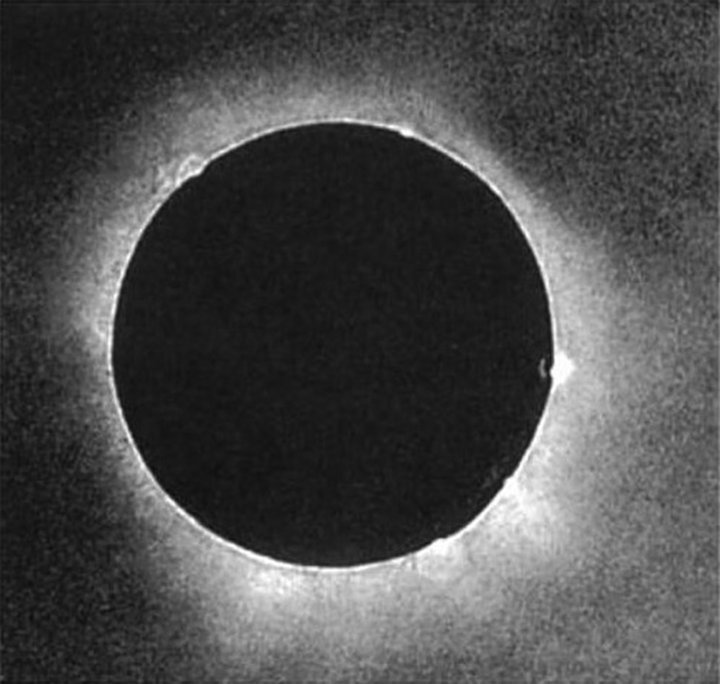29.07.2017
1st Photo of a Total Solar Eclipse Was Taken 166 Years Ago Today

Johann Julius Friedrich Berkowski made the first solar eclipse photograph on July 28, 1851, using the daguerreotype process.
-
As you prepare for the total solar eclipse of Aug. 21, here's something to think about: The first photo of a total solar eclipse was taken on July 28, 1851, by Johann Julius Friedrich Berkowski, who was said to be the most skilled daguerreotypist in the Prussian city of Königsberg (now Kaliningrad, Russia).
Berkowski was commissioned by the Royal Prussian Observatory at Königsberg to create a still image of the total solar eclipse using the daguerreotype process, in which the image was directly exposed onto a polished copper plate.
Once it was polished to a shiny, mirror finish, the silver-plated copper was treated with halogen or iodine fumes that made it sensitive to light. Exposing the copper plate inside the camera would leave behind a latent image, or an invisible trace of the photograph.
To make a latent image visible, the daguerreotypist would treat the copper plate with mercury vapor in a dark room. Applying a liquid chemical treatment then removed the light sensitivity of the plate. Then, the daguerreotypist could rinse it off, dry it and seal it in a glass frame. The final product was a black-and-white image that was microscopically textured as a result of the silver's exposure to sunlight.
Before Berkowski created his famous first daguerreotype of a total solar eclipse, photographers had struggled to capture any decent images of eclipses. Photos were often overexposed or underexposed, and they failed to show the right amount of contrast between the sun's bright corona and the dark disk of the moon.
According to a paper in the journal Acta Historica Astronomiae, Berkowski's daguerreotype was the first correctly exposed image of the sun's corona. Berkowski used a small refracting telescope and captured an 84-second exposure that he initiated as soon as the moon had moved completely in front of the sun, the paper explains. Not only did his photo show the contrast between the corona and the moon, but it even revealed a few solar prominences extending from the sun's disk.
Since then, solar eclipse photography has become much easier with digital cameras and even smartphone cameras. To find out how you can capture your own cool photo of totality, check out our guide to photographing the solar eclipse.
Quelle: SC
